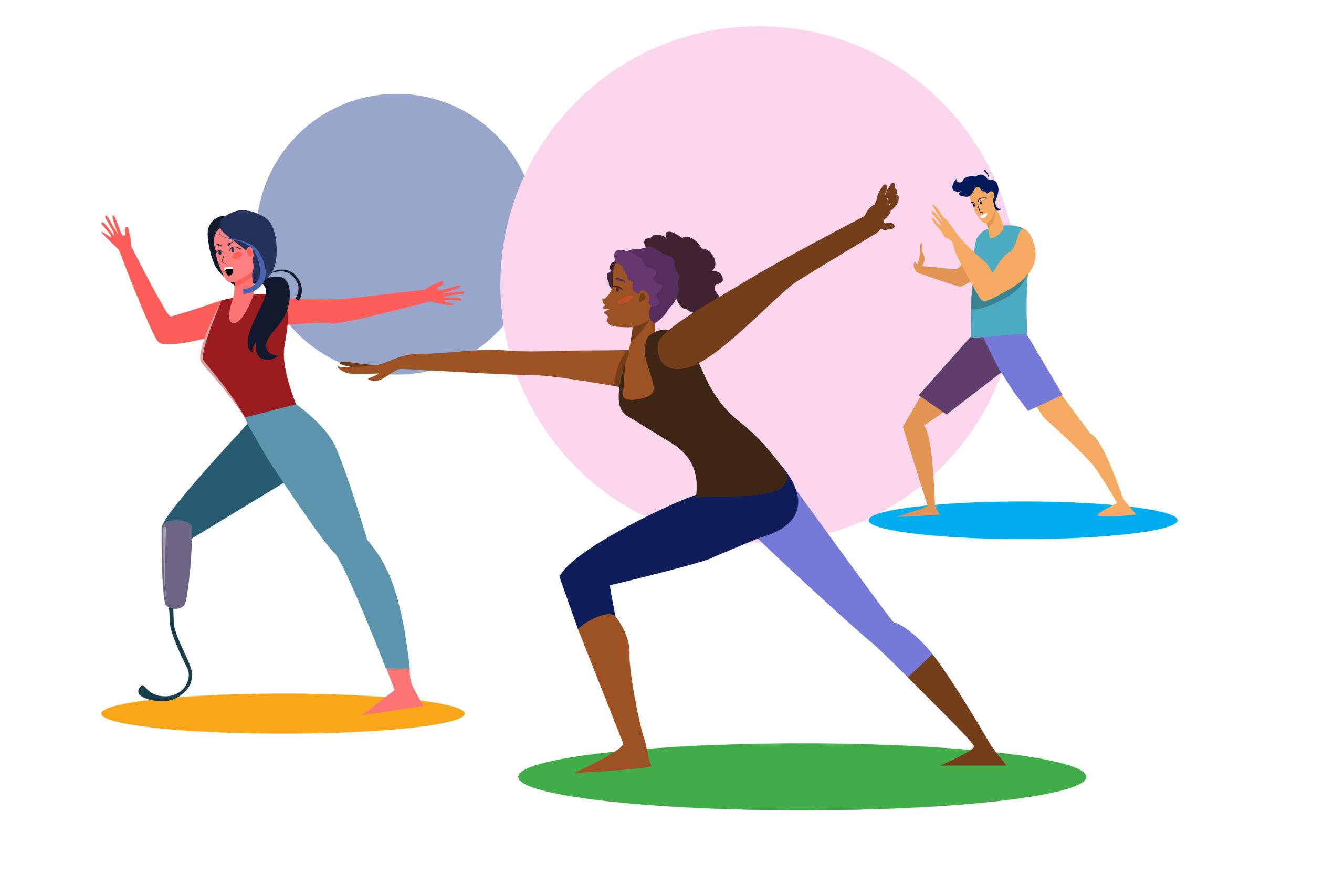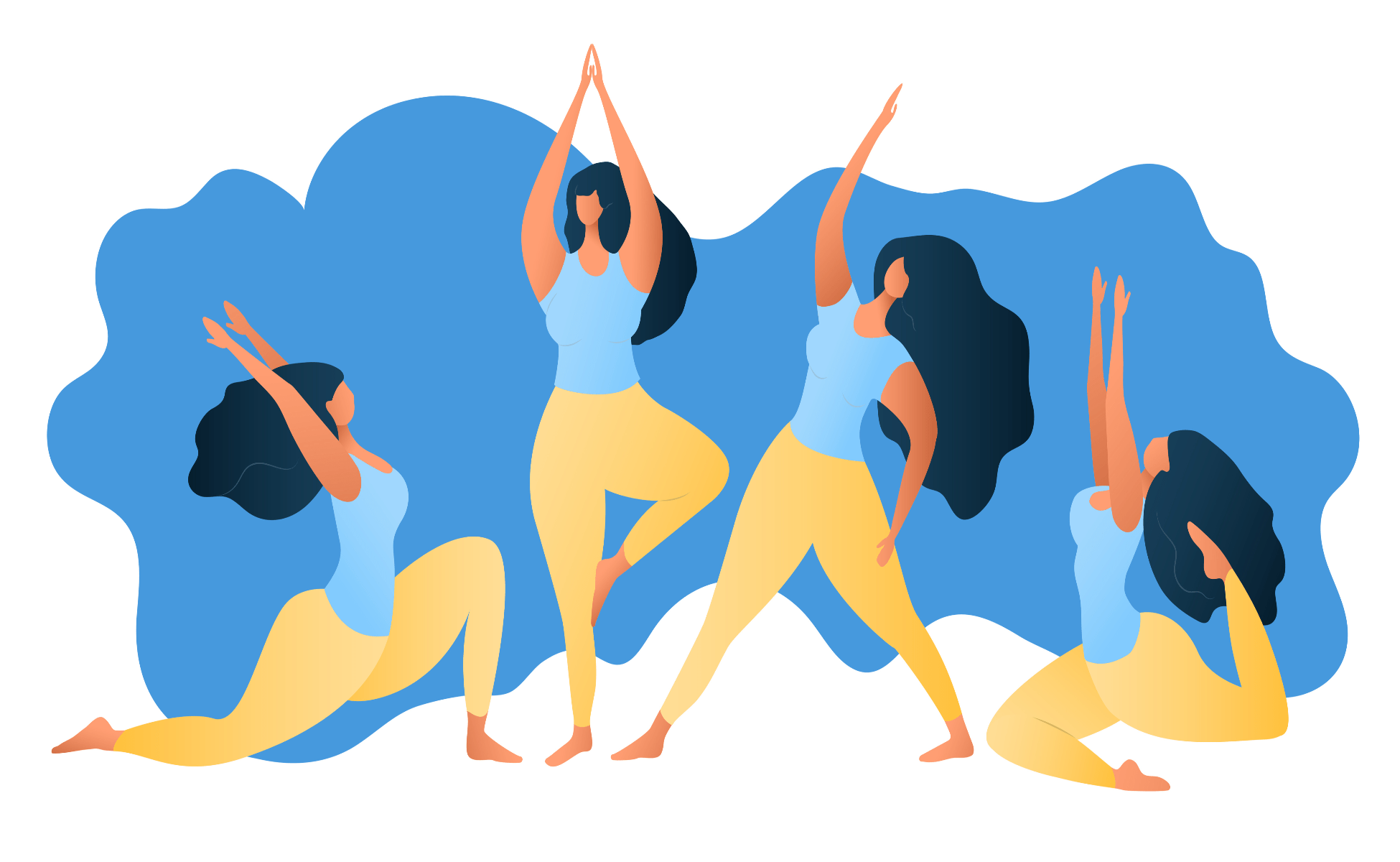All kinds of terms these days describe mindful movement: working out, exercising, dancing, biking, hiking, and cross training. Don’t let yourself get distracted by the words. They all point to a common idea and practice—moving the body. Whether we walk, do yoga, run, bike, or swim is unimportant. What matters is that these activities shift us out of what Henry David Thoreau calls the “sedentary life.”
In this practice, however, we want to focus less on formal periods of exercise and more on micro-bursts of movement throughout the day. After all, we know that exercise holds profound benefits for the mind and body and many of us have a regular program. However, the research on movement shows that peak mental and physical fitness isn’t just about exercise. It’s also about breaking up sedentary behavior with brief periods of movement as we go throughout each day.
We’re going to focus on using mindfulness to weave movement into your day. This could be as simple as getting up to stretch once an hour, walking while making phone calls, or standing up as you text. These practices of movement aren’t difficult or time consuming, but for many of us, simply remembering to do them is difficult work and requires building a new mental habit.
Why Is It Important to Break Up Our Ordinary Habit of Sitting?
Scientists used to think that short thirty-minute bursts of exercise were all that mattered—that your activity level during the other hours of the day had no significant impact on well-being. But recent findings show that movement, or lack thereof, during our time at work, at home, and in the car has profound effects on health and well-being. This research has led some to suggest that “sitting is the new smoking” and surfaced in a Time magazine article entitled “Sitting Is Killing You.”
A study in the medical journal Lancet on over 1 million people found that exercising 60 to 75 minutes every day can eliminate the increased health risks associated with high sitting time. However, this level of exercise is rare. And in cases where high sitting time was combined with high TV-viewing time, researchers found an hour of exercise only reduced but did not eliminate the increased risk.
Sitting’s effects on our posture and rest of the body can be dramatic, too. As you sit, it’s typical for the shoulders to round and the head to be slightly forward which pulls on the neck and back. Hip flexors and chest muscles shorten and tighten and the lower body muscles weaken. Many people complain of back pain and extended sitting is a common culprit.
The ordinary habit of sedentary behavior is problematic for several reasons. First, the more we sit, the more we reduce the energy expenditure of the body. This means that we burn fewer calories and reduce circulation. Second, the numerous circulation, insulin production, enzyme processes, and mechanisms that suppress inflammation are all affected by sitting. And, not surprisingly, the more we sit, the more we tend to eat. In studies of TV watching, the number of hours spent sitting correlates with an increase in caloric intake.
The good news is that by taking more breaks, walking more, and sitting less, we can easily reverse these effects.
A Practice to Help Make Mindful Movement Part of Your Day
Movement is a physical act, yet the key to building this habit of regular movement is all mental. It involves developing the moment-to-moment awareness to catch yourself each time you have been sitting for an extended period and then shift your physical and mental state by moving in some way.
Step 1: Notice
Have you been sitting for more than an hour? Is your mind starting to slow down? Are your neck and shoulders getting tense? These are all cues that you can use to notice the need to move.
Step 2: Shift
This is the fun part. To shift, all you have to do is move for a few minutes. Here are just a few strategies:
- Stand up: During a call or meeting just stand up for 10-15 minutes.
- Walk: Take a brief stroll around your home or office.
- Stretch: Get up and stretch out your shoulders, neck, or hamstrings.
- Dance: If you want to have some fun with this, put on your favorite song and dance for a few minutes.
- Watch and move: Use guided stretch and recharge videos.
Step 3: Rewire
The final move here is to take just a few minutes to savor the shift in energy you experience through movement. Feel any changes in your mind and body. Notice how just a few minutes of movement can alter your state and refresh your mind.
Quick Tips
If you find yourself struggling to build this practice into your day, here are some additional tips:
- Schedule it: Try putting a few short movement breaks into your calendar. You might, for example, take 15 minutes at noon to walk around your home or office. You might take 5 minutes to stretch in between meetings.
- Set notifications: For some of us it helps to set notifications to alert us to when we’ve been sitting for long stretches. Most wearables like FitBit and Apple Watch allow you to do this. Or you can simply set an alarm on your phone.
- Make it social: One of the best ways to build this habit is by doing it with friends or coworkers. You can do this by scheduling walks instead of coffee breaks, setting up walking meetings, or simply strolling around the office for a few minutes as you finish a conversation.
- Make it easy: Rather than a large glass or bottle of water at your desk, use a small one. Getting up for refills means you’re moving. And welcome those bathroom breaks that come with being well hydrated!
- Embrace inefficiency: While society and products have done everything they can to increase convenience, most of these “improvements” mean we move less. Challenge yourself to put all remotes in a central spot and after you’ve used them, they stay there. Consider going out to pick up an item you’d normally have delivered. Get creative and see how you can fight efficiency in the name of extra movement.
- The TV workout: For many of us, our most sedentary hours are those spent watching TV. After a long day, the temptation is to sit back on the couch or in a chair and relax. To break the habit, make the following deal with yourself: Whenever I watch TV, I need to be doing something other than sitting. Or if that is too ambitious, you might commit to moving during commercials. Watching television is the perfect time for core work: sit-ups, crunches, and other core-strengthening exercises. It is also the perfect time for stretching, thus increasing the flexibility of your hamstrings, neck, and shoulders.
Excerpt Adapted from Start Here: Master the Lifelong Habit of Wellbeing by Eric Langshur and Nate Klemp, PhD.
read more
Getting Started with Mindful Movement
Riding a bike, lifting weights, sweating it out on a treadmill—each can be a mindfulness practice. Whatever the physical activity, instead of simply working out to master a skill or improve your condition, you can move and breathe in a way that shifts you from feeling busy and distracted to feeling strong and capable.
Read More
How Mindful Movement Can Support Your Meditation Practice: Q&A with Cara Bradley
Dropping straight into meditation can be difficult if we have a lot on our mind. Cara Bradley offers some advice on how mindful movement can help.
Read More
A Gentle Movement Practice to Connect With Your Brave Heart
In this seated yoga practice, we cultivate the tools to nurture, strengthen, and give courage to our fearless hearts.
Read More
Mindful Movement to Ease into Sleep
9 Minutes: Let go of the day’s tension and prepare for bed with this simple movement practice and breathing meditation.
Read More










